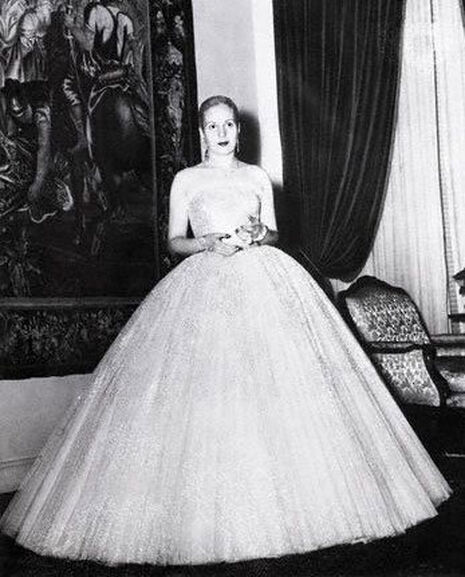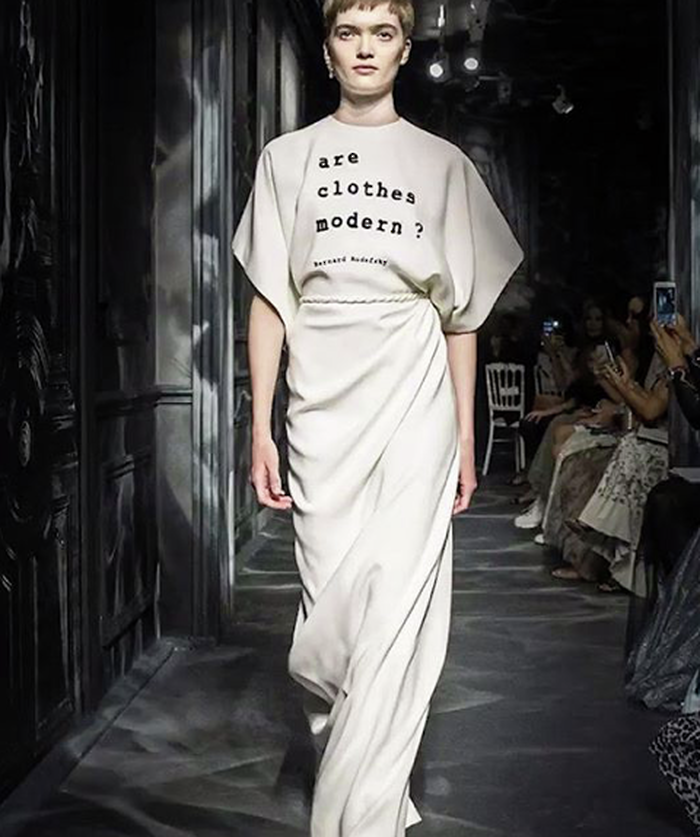Christian Dior was more than just a designer of dreams
Natasha Schmittzehe argues that the legacy of one of couture’s founding fathers is one of championing women, through style that empowers and rebels.

“A ballgown is your dream, and it must make you a dream”. Uttered by Christian Dior in 1954 and indented on one of the Victoria & Albert Museums walls this summer, this poetic line perfectly reinforces the fashion designer’s well-earned reputation as “the Designer of Dreams”, a designer whose fashion transports us to our most fantastical fairy tales.
While now the name Dior conjures up images of glamorous and glitzy supermodels dripping gold, oozing sex appeal as they whisper seductively “J’adore”, when the fashion house was first conceived in 1947, its mission was far greater than just embracing femininity. It was tasked with resurrecting it.

After years of “waste not want not” during the Second World War, wherein fashion was boxy, fabric-conserving and as drab and unexciting as wartime rationing necessitated, Dior’s extravagant billowing skirts were welcomed as a refreshing change and ultimately, transgressive. Finally, women had been given the chance through fashion to celebrate elegance, joy and beauty. In Dior’s own words, his “New Look” offered “youth, hope and the future”. It was so controversial that some women even had their dresses ripped off in the street by older women, who viewed the outfits as decadent.
Dior’s designs not only manage to be aesthetically innovative; they also feed off a sense of history, one that is both traditional and personal. He took inspiration from many places – his fondness for England with its little traditions, led him to design Princess Margaret’s 21st birthday dress and those of other English débutantes; while his dress designs themselves harken back to the grandeur and opulence of those seen during La Belle Époque.
These works also speak volumes about the couturier’s own life. The “New Look” Dior created, in which his dresses are based on the form of inverted flowers, seep at their very seams a nostalgia for his sheltered childhood days in Granville, a quaint seaside town off the Normandy coast, where his dear mother Madeleine would spend her time gardening. In fact, each fashion collection during Dior’s lifetime included a coat named Granville and two of Dior’s most renowned dresses, the Andrieux and the Vilmorin, are named after his mother’s Vilmorin-Andrieux plant catalogues.
It could be argued that the old-fashioned structures of Dior’s dresses could be seen as an attempt to reshackle women as mere ornaments – in turn mirroring the intense objectification of models in many adverts today. But that is just too simplistic, and this does not seem to be the aim Dior had in mind when envisioning his creations. His debut perfume, Miss Dior, would be dedicated to another important woman in his life, his youngest sister Catherine, who was deported to Ravensbrück women’s concentration camp after being revealed to be part of the Polish intelligence unit in France (she was eventually freed in 1945). Whether purely incidental or not, it still seems significant that the woman embodying Dior’s first perfume was not only beloved but critically, strong, independent and powerful, fighting for her convictions and beliefs.
Despite the House of Dior being quick to have a global impact, its products reaching far and wide, Christian Dior’s career only lasted 11 years, before he died from a sudden heart attack at a health spa in Montecatini. However, by this point, Dior had already been immortalised. It would be a 21-year-old Yves Saint Laurent who would become director of the House of Dior and steer the fashion house in a new direction, all whilst ensuring that Dior’s legacy would live on.
 News / Clare Hall spent over £500k opposing busway 24 December 2025
News / Clare Hall spent over £500k opposing busway 24 December 2025 Comment / The ‘class’ of Cambridge24 December 2025
Comment / The ‘class’ of Cambridge24 December 2025 News / Caius mourns its tree-mendous loss23 December 2025
News / Caius mourns its tree-mendous loss23 December 2025 Comment / Yes, I’m brown – but I have more important things to say22 December 2025
Comment / Yes, I’m brown – but I have more important things to say22 December 2025 News / Girton JCR publishes open letter expressing solidarity with Palestine25 December 2025
News / Girton JCR publishes open letter expressing solidarity with Palestine25 December 2025










